ArcGIS Geodatabase Overview
ArcGIS Geodatabase Overview
ArcGIS Geodatabase Overview
You also want an ePaper? Increase the reach of your titles
YUMPU automatically turns print PDFs into web optimized ePapers that Google loves.
<strong>ArcGIS</strong> <strong>Geodatabase</strong><br />
<strong>Overview</strong><br />
June 28, 2004
Outline<br />
1. Geographic Data Formats<br />
2. What is a <strong>Geodatabase</strong><br />
3. Types of <strong>Geodatabase</strong><br />
4. <strong>Geodatabase</strong> Components<br />
5. Demo
Geographic Data Formats<br />
• CAD<br />
• First computer mapping model/format<br />
• Binary file format with little attribute information
Geographic Data Formats<br />
• Coverage<br />
• Georelational data model<br />
• Native ARC/INFO 7 format<br />
• Vector data is linked to attribute tables by a common<br />
identifier<br />
• Topological relationships are maintained<br />
• Limitations – features aggregated into collections of points,<br />
lines, and polygons with generic behavior. The behavior of<br />
a line representing a road is the same as the behavior of a<br />
line representing a stream.
Geographic Data Formats<br />
• Shapefile<br />
• Introduced with ArcView<br />
• Georelational data model – nontopological vector data<br />
format<br />
• Consist of up to 7 files, require .shp.<br />
shp, , .shx.<br />
shx, , and .dbf files.<br />
ArcView creates index files of .sbx.<br />
sbx, , .sbn.<br />
sbn, , .ain.<br />
ain, , .aih.<br />
• Very common format – wide availability of GIS data in<br />
Shapefile format<br />
• Do not store topological associations among different<br />
features and feature classes<br />
• Lack of topology limits analysis capabilities
Geographic Data Formats<br />
• <strong>Geodatabase</strong><br />
• Introduced with <strong>ArcGIS</strong> 8…
What is a <strong>Geodatabase</strong><br />
• A geodatabase is a relational<br />
database that contains spatial and<br />
non-spatial objects.<br />
• The geodatabase supports the<br />
storage and management of<br />
geographic information in standard<br />
database management system<br />
tables. –ESRI Press
Types of <strong>Geodatabase</strong><br />
• Personal <strong>Geodatabase</strong><br />
• Microsoft Jet Engine database file structure.<br />
• The files have a “.mdb” extension, and are the same as typical<br />
Microsoft Access database files.<br />
• Browsable and editable with <strong>ArcGIS</strong>, , or the files can be opened in<br />
Microsoft Access.<br />
• Maximum file size of 2 gigabytes (GB)<br />
• Freely available to all <strong>ArcGIS</strong> users. Microsoft Access is not<br />
required.<br />
• Store only vector data and tabular data, cannot store raster data
Types of <strong>Geodatabase</strong><br />
• Personal <strong>Geodatabase</strong><br />
• Can be read by multiple users at the same time, but edited by<br />
only one user at a time.<br />
• Ideal for working in small work groups. Typically, users will<br />
employ multiple personal geodatabases for their data collections<br />
and access these simultaneously for their GIS work.<br />
• Generally, PGDB yield decent performance for datasets of 250,000<br />
objects or less.<br />
• Advantages of PGDB over shapefiles:<br />
Stores data in a single file<br />
Store multiple feature classes in a feature dataset<br />
Support for annotation
Types of <strong>Geodatabase</strong><br />
• Multi-user user (Enterprise) <strong>Geodatabase</strong><br />
• Require ArcSDE and a DBMS (Database Management<br />
System)<br />
• Compatible with SQL Server, Oracle, IBM’s s DB2 Universal,<br />
and Informix DBMS.<br />
• Can be read and edited by multiple users at the same time<br />
• Can store raster data<br />
• Suitable for large workgroups, enterprise level production<br />
environments<br />
• Requires ArcEditor or ArcInfo for data creation and editing
Types of <strong>Geodatabase</strong>
<strong>Geodatabase</strong> Components<br />
• Object Class (Attribute Table)<br />
• Collection of non-spatial objects in tabular format that have<br />
the same behavior and attributes.<br />
• Stored at the geodatabase root level, not within a feature<br />
dataset.<br />
• Unique identifier (ObjectID(<br />
ObjectID) ) for each record
<strong>Geodatabase</strong> Components<br />
• Feature Class<br />
• Features are objects with<br />
required shape (points, lines, and<br />
polygons) that represent a real<br />
world object in a layer on a map<br />
• A Feature Class is a collection of<br />
features in tabular format that<br />
have the same behavior and the<br />
same attributes.<br />
• Feature Classes are stored at the<br />
geodatabase root or in a featured<br />
dataset.<br />
• Feature Class = Object Class +<br />
spatial coordinates<br />
• Feature Class Types: Point, Line,<br />
Polygon, Annotation
<strong>Geodatabase</strong> Components<br />
• Feature Dataset<br />
• A Feature Dataset is a collection<br />
of Feature Classes that share the<br />
same spatial reference frame<br />
• <strong>Geodatabase</strong>s store relationships<br />
based on tabular information.<br />
Feature Datasets store<br />
relationships based on geographic<br />
information.<br />
• Example Feature Datasets: PLSS<br />
(Contains sections, townships,<br />
quarters, quarter-quarters);<br />
quarters);<br />
Annotation(Contains all anno<br />
classes)
<strong>Geodatabase</strong> Components<br />
• Relationships and Relationship<br />
Classes<br />
• Relationships are an association or link between two or more<br />
objects in a geodatabase<br />
• A relationship can exist between:<br />
• Spatial objects (features in feature classes)<br />
• Non-spatial objects (rows in tables)<br />
• Spatial and non-spatial objects<br />
• Relationship Class relationships can be one-to<br />
to-one, one, one-to<br />
to-<br />
many, many-to<br />
to-many<br />
• Can be created and edited using ArcInfo or ArcEditor only, but<br />
can be accessed in ArcView
<strong>Geodatabase</strong> Components<br />
• Network<br />
• A Geographic Network is a set<br />
of edges (lines) and junctions<br />
(points) that are topologically<br />
connected to each other<br />
• Each edge knows which<br />
junctions are at its endpoints<br />
• Each junction knows which<br />
edges it connects to<br />
• Can be created and edited<br />
using ArcInfo or ArcEditor<br />
only
Demo
Sources<br />
• http://ceprofs.tamu.edu/folivera/GIS-<br />
CE/<strong>ArcGIS</strong>Materials/03<strong>Geodatabase</strong>s/Class/ArcCatolog%20and%20<strong>Geodatabase</strong>s1.ppt<br />
tabases1.ppt<br />
• http://typhoon.sdsu.edu<br />
typhoon.sdsu.edu/People/Pages/ jankowski/public_html/Lecture6.ppt<br />
• http://www.ce.utexas.edu/prof/maidment<br />
www.ce.utexas.edu/prof/maidment/ / giswr2003/visual/lecture22003.ppt<br />
• http://www.utdallas.edu/~briggs/poec6382/arccatalog.ppt<br />
• www.ees.nmt.edu/EPSCoR/GIS_class/Lecture18.ppt<br />
• <strong>ArcGIS</strong> 8: What is <strong>ArcGIS</strong>, , ESRI Press


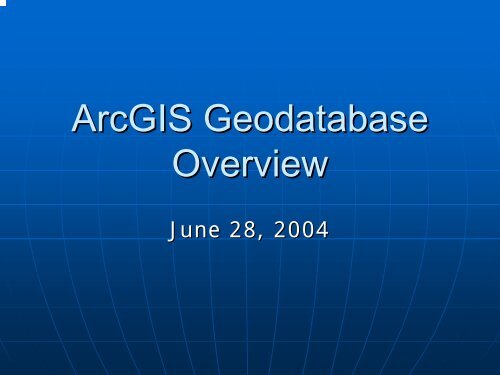

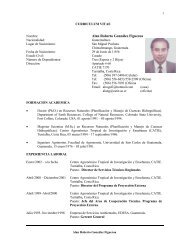
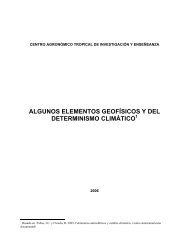
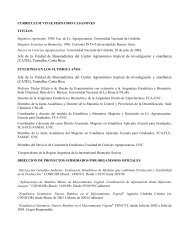
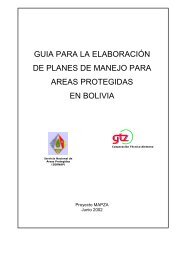
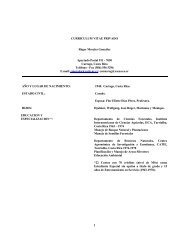
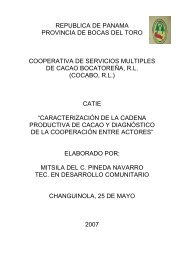

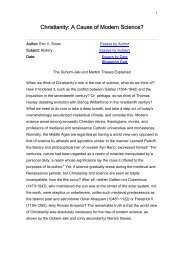
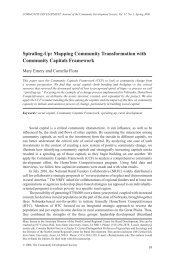
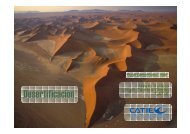
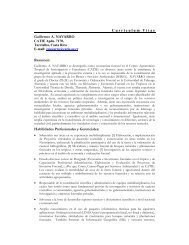

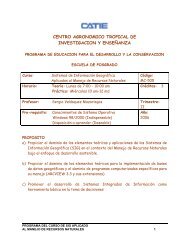
![Tratamientos y MD_2009 [Modo de compatibilidad].pdf - Catie](https://img.yumpu.com/49175499/1/190x134/tratamientos-y-md-2009-modo-de-compatibilidadpdf-catie.jpg?quality=85)